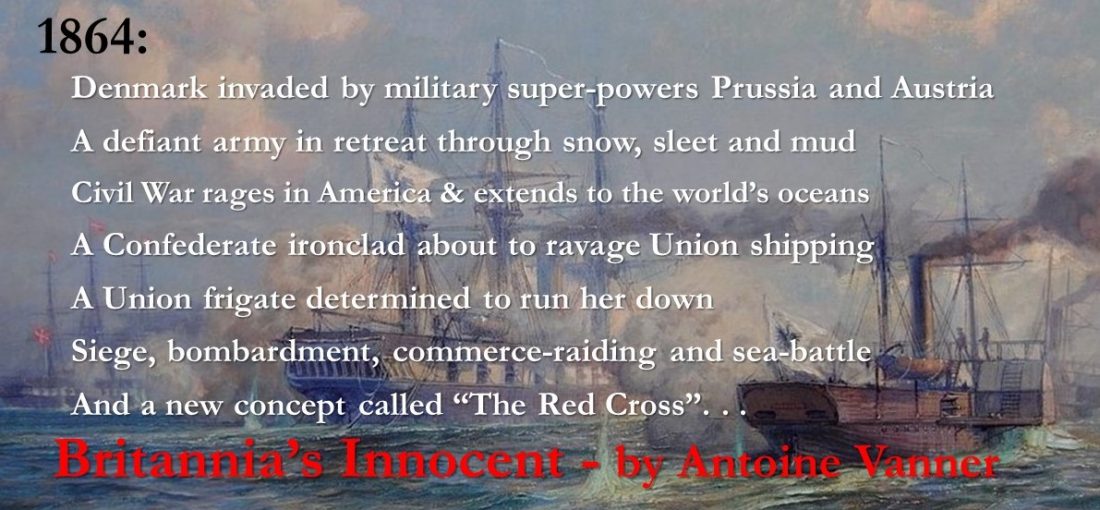Disaster at Gibraltar – SS Utopia and HMS Anson, 1891
In 1866, at the naval battle of Lissa, in the Adriatic, victory was secured by the Austrian fleet over its Italian enemy by means of ramming. Though this was a unique event in a fleet-action, and made possible only by factors – such as short effective gun ranges – which were soon obviated by technical progress, naval architects where to be fixated in the decades at followed on designing ram bows into warships of all sizes.
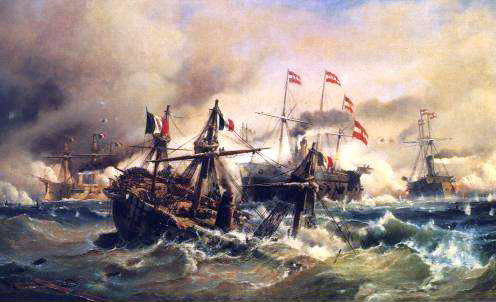
Battle of Lissa 1866 – Italian Re d’Italia sinking after ramming by Austro-Hungarian Ferdinand-Max
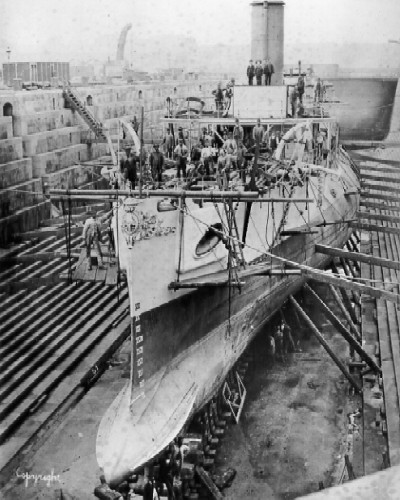
The ram of HMS Polyphemus
In practice the ram feature was to prove more dangerous to friends than to enemies and caused five major collision disasters. One which occurred in Gibraltar in 1891 was in many ways the most horrific and tragic of all, yet the vessel which struck the mortal blow was at anchor at the time.
SS Utopia was a transatlantic passenger steamer, built in 1874, which saw service for the Anchor Line on Britain to United States and Britain to India routes until 1882. Thereafter she was dedicated to carrying immigrants from Italy to the United States. Of 2,371 tons and 350 ft length she was capable of a maximum speed of 13 knots. Once in immigrant service her accommodation was converted almost entirely to steerage standard – 900 bunks, as compared with 45 places in first-class and none in second-class. Conditions must have been cramped in the extreme – as was to be seen in dreadful detail in the aftermath of the tragedy which would unfold.
SS Utopia sailed from Trieste, on what would be her last voyage, in February 1891. She took on further passengers at Naples and Genoa and was due to put in Gibraltar prior to her Atlantic crossing. By this stage she had 880 people on board, of which 59 were crew and the remainder passengers, of whom only three were in First Class. Of the 815 steerage passengers there were 85 women and 67 children and there appears to have been three stowaways. As was to be found in the case of the Titanic 21 years later, and as had been the case with numerous previous maritime disasters, the provision of life-saving equipment was criminally inadequate. It was later revealed by SS Utopia’s captain himself that his ship normally carried seven lifeboats. Together they could accommodate “up to 460 people in moderate weather” but on the night of the catastrophe to come one of these boats was missing.
One wonders at the mood on board this overcrowded ship. Many, if not most, of the passengers had probably never been more than a few miles from their home villages previously. Poverty would have been a major driver. Their decision to seek a new life in a country they knew little of was little short of heroic and many would have been bewildered by the experience of travel by sea and might also have been worried by fears about an uncertain future in America.

HMS Anson – her pointed ram is invisible below the watrerline
On the afternoon of March 17th 1891 the SS Utopia reached Gibraltar. Captain John McKeague was familiar with this anchorage and he headed his ship towards her usual mooring in the inner harbour. Light was failing and only too late did McKeague realise that two Royal Navy Battleships, HMS Anson and HMS Rodney were already there. At this time these two ships of the “Admiral Class” were among the most modern in the Royal Navy, each of 10,600 tons on a 330 ft. length and with four 13.5 inch guns as their main armament. More significant on the present occasion was that both had viciously-pointed rams extending below water level from their bows. A large armoured cruiser present, HMS Immortalité, was similarly equipped. The Swedish corvette Freja was also at anchor.
At this remove in time it is hard to understand how the SS Utopia could enter a confined anchorage in darkness without a pilot, and how the presence of three very large ships there, and a smaller corvette, had not been noted previously. In a later deposition Captain McKeague stated that he was briefly dazzled by HMS Anson ’s searchlight. Only when he was became accustomed to the glare did he “suddenly discover that the inside anchorage was full of ships”. He claimed that he thought that Anson was “further off than she really was” and he tried to steer in ahead of her bow. The manoeuvre was an unwise one and wind and currently swept the Utopia along HMSAnson’s bow. Acting like a giant can-opener, the ram tore a 16 foot gash below the Utopia’s waterline. Flooding began and engine power was lost immediately.
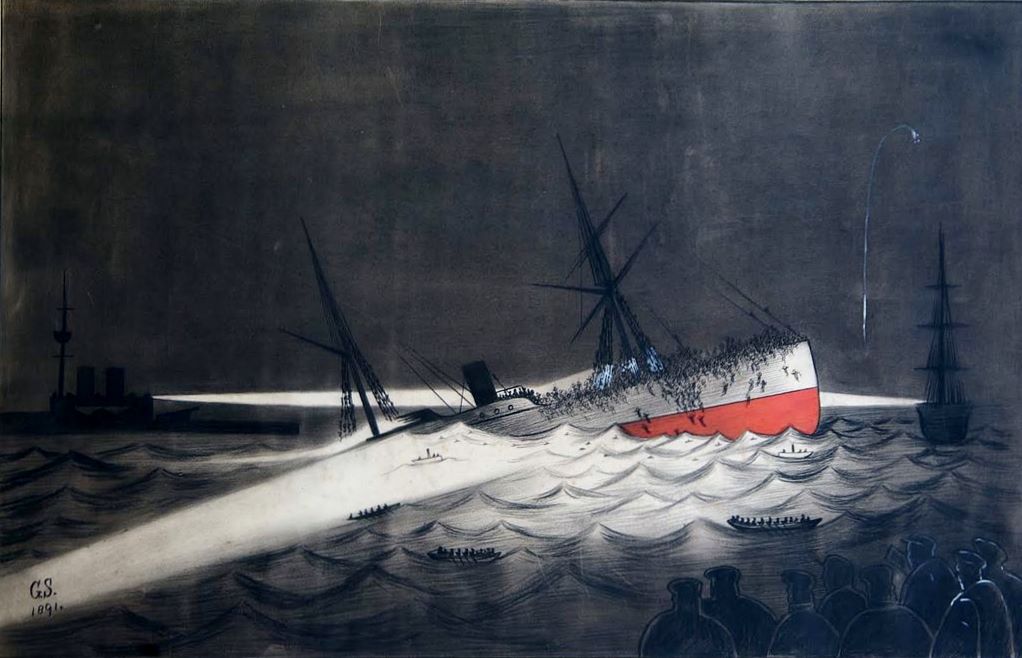
Sinking of the SS Utopia – sketch by eyewitness Miss Georgina Smith (with thanks to Gibraltar Museum & Wikipedia – Public Domain)
McKeague now ordered lifeboats to be launched but, as they were, the SS Utopia suddenly listed 70 degrees to port, sinking the boats, inadequate as they were. Many were now clinging to the ship’s starboard side but hundreds more were trapped below. The ship sank 20 minutes after the collision, leaving her masts protruding as a pathetic last refuge.
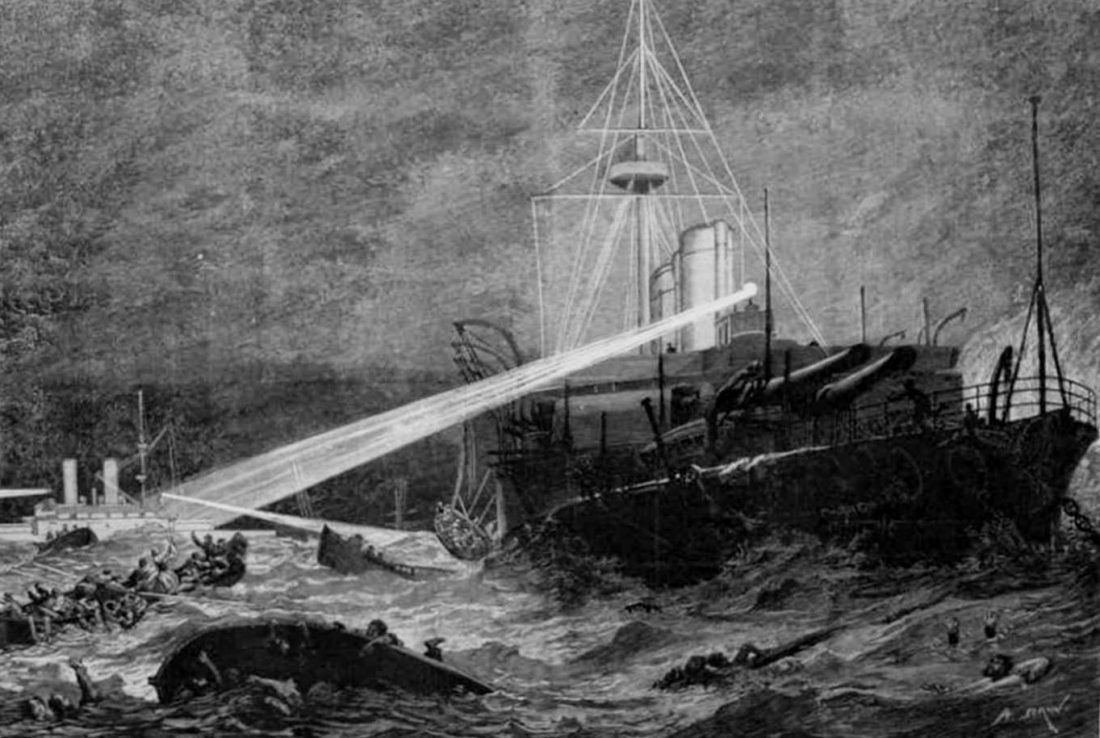
Contemporary illustration – HMS Anson’s rescue efforts
Darkness, atrocious weather and a strong current were major obstacles to the rescue efforts immediately initiated by the four warships and other vessels present. According to one report “rescuers, blinded by the wind and rain, saw nothing but a confused, struggling mass of human beings entangled with wreckage.” Illuminated by searchlights, rescue efforts continued for several hours, during which two seamen from HMS Immortalité, James Cotton and George Hales (they deserve to be remembered with honour) lost their lives. Of the 880 persons on the SS Utopia, 562 died. Among those saved was Captain McKeague.

Ship identifications imposed in red on a contemporary sketch
Divers subsequently found that the SS Utopia’s interior was “closely packed with the bodies … who had become wedged into an almost solid mass” and that “the bodies of many of the drowned were found so firmly clasped together that it was difficult to separate them.” The horror these men faced hardly bears thinking off, especially as there were women and children among the dead. One wonders how many of the survivors did eventually reach their Promised Land of the United States, if they found happiness there and if any of their descendants might read this article.
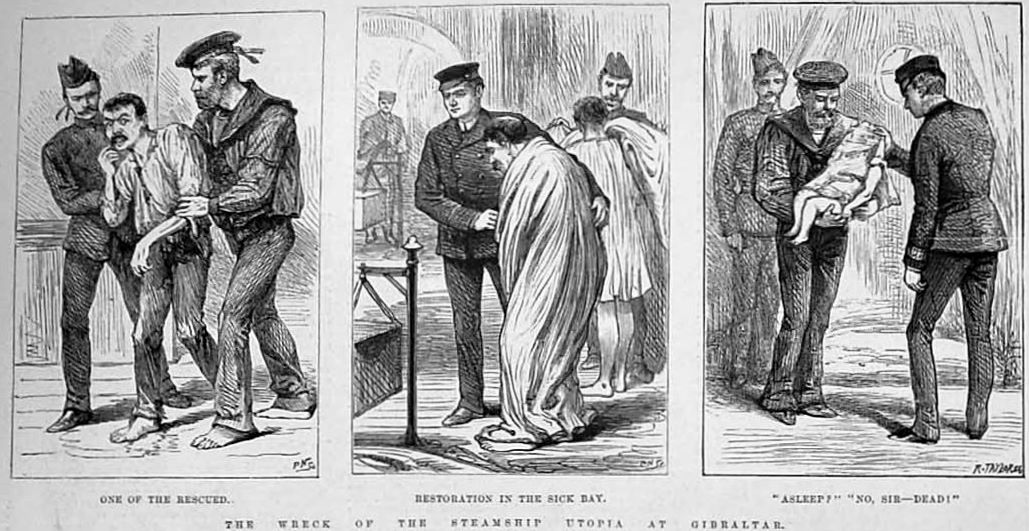
Even after 12 decades these images move. On the right: “Asleep?”, “No, Sir – Dead”
SS topia’s ability to cause havoc was not yet an end. Though warning lights were placed on her protruding mastheads, another steamer, the SS Primula, collided with her and was badly damaged, fortunately without further loss of life. The SS Utopia was afterwards raised and scrapped.
Significant though HMS Anson’s ram bow was as factor in the accident, more important still was Captain McKeague’s recklessness. The most criminal aspect of the entire disaster was however the provision of an inadequate number of lifeboats, and the fact that a passenger ship could ever be allowed to leave port in such a state. When one reads of maritime tragedies of the 19th Century one is struck by how often this inadequacy was a common feature. It was to take the RMS Titanic disaster in 1912 to get this scandal finally eradicated but it should not have needed a catastrophe of that magnitude to secure reform. The lesson had been taught for the best part of a century – but it was not learned, and thousands of innocents, like the immigrants on the misnamed Utopia, paid the price.
Start the 11-volume (so far!) Dawlish Chronicles series of novels with the earliest chronologically:
Britannia’s Innocent
 1864 – Political folly has brought war upon Denmark. Lacking allies, the country is invaded by the forces of military superpowers Prussia and Austria. Across the Atlantic, civil war rages. It is fought not only on American soil but also on the world’s oceans, as Confederate commerce raiders ravage Union merchant shipping as far away as the East Indies. And now a new raider, a powerful modern ironclad, is nearing completion in a British shipyard. But funds are lacking to pay for her armament and the Union government is pressing Britain to prevent her sailing. The Confederacy is willing to lease the new raider to Denmark for two months if she can be armed as payment, although the Union government is determined to see her sunk . . .
1864 – Political folly has brought war upon Denmark. Lacking allies, the country is invaded by the forces of military superpowers Prussia and Austria. Across the Atlantic, civil war rages. It is fought not only on American soil but also on the world’s oceans, as Confederate commerce raiders ravage Union merchant shipping as far away as the East Indies. And now a new raider, a powerful modern ironclad, is nearing completion in a British shipyard. But funds are lacking to pay for her armament and the Union government is pressing Britain to prevent her sailing. The Confederacy is willing to lease the new raider to Denmark for two months if she can be armed as payment, although the Union government is determined to see her sunk . . .
Just returned from Royal Navy service in the West Indies, the young Nicholas Dawlish volunteers to support Denmark. He is plunged into the horrors of a siege, shore-bombardment, raiding and battle in the cold North Sea – not to mention divided loyalties . . .
For more details, click below:
For amazon.com For amazon.co.uk For amazon.com.au
The Dawlish Chronicles – now up to eleven volumes, and counting. In Kindle and paperback. Kindle Unlimited subscribers read at no extra charge. Click on image for details of each.
Six free short-stories are available for download to your Kindle. Access them by registering for the Dawlish Chronicles mailing list – just click on the banner below. You’ll be kept updated on new books and will receive other free stories at intervals.


